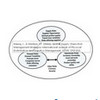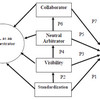 Security concerns are an issue that has gained increased importance in supply chains. While accidents do happen, and while natural disasters may be nothing more than background noise (the understatement of the year, I suppose), security breaches can have more devastating consequences. This paper, Supply Chain Security Management: an overview, by Juha Hintsa, Ximana Gutierrez, Philippe Wieser and Ari-Pekka Hameri, presents the current state of initiatives in supply chain security management, and discusses their managerial implications, highlighting the importance of interplay between various business and governmental parties.
Security concerns are an issue that has gained increased importance in supply chains. While accidents do happen, and while natural disasters may be nothing more than background noise (the understatement of the year, I suppose), security breaches can have more devastating consequences. This paper, Supply Chain Security Management: an overview, by Juha Hintsa, Ximana Gutierrez, Philippe Wieser and Ari-Pekka Hameri, presents the current state of initiatives in supply chain security management, and discusses their managerial implications, highlighting the importance of interplay between various business and governmental parties.
Supply Chain Security Background
Security is a supply chain management issue that has grown in importance, particularly in recent years. Most recent is the development of the ISO 28002 Supply Chain Security and Resilience standard. An earlier paper by Williams, Lueg & LeMay from 2008 presents an overview and research agenda for supply chain security. Even earlier, the 2005 IBM white paper on Investing in Supply Chain Security highlights the benefits of improved security. In other words, supply chain security is a matter that should not be overlooked, and today’s paper takes on a practical approach, describing five areas in the supply chain where security measures should be considered.
Supply Chain Security Initiatives
The paper also lists the different security initiatives that are currently in place by governments and international bodies and what these initiatives are meant to focus on:
- originating actor
- International organizations, governmental agencies, private sector
- transport mode
- air, sea, rail, road
- enforceability
- mandatory or voluntary
- main goal
- customs administration, reducing specific vulnerabilities, global security, technology development
There is a great variety of initiatives, all targeting supply chain security enhancement, but from different perspectives.
Supply Chain Security Measures
However, while the above initiatives overlap each other, which isn’t such a bad thing, they also leave gaps, which is much worse. Consequently, in order to overcome this, the paper lists these five categories of concern for supply chain security:
- Cargo Management
- Facility Management
- Information Management
- Human Resources Management
- Company Management Systems
and describes in detail what security measures that should be implemented:
Cargo Management – Protecting cargo during all steps of manufacturing, shipping and transport processes:
- Efficient prevention, detection and reporting of shipping process anomalies (routes and schedules continuous review; alerts management)
- Adequate inspections during the shipping process (in points where liability changes, to packaging materials and vehicles before being in contact with cargo).
Facility Management – Guaranteeing the security of the facilities where goods are manufactured and cargo is stored and handled.
- Optimal warehouse/terminal layout design (entry/exit controllability; clearly marked control areas; sufficient light conditions)
- Efficient facility monitoring (24hr camera system, security guards, filming activities of loading containers, picking ).
Information Management – Protecting critical business data and exploiting information as tool for detecting illegal activities and preventing security breaches.
- High protection of business information/data (management procedures and storing methods designed to protect information from unauthorized access and usage).
- Accurate and complete recordkeeping of shipping information for potential security audits (improved recordkeeping methods; quality control of records, error correction).
Human Resources Management – Guaranteeing trustworthiness and security awareness of all personnel with physical or virtual access to the supply chains.
- Professional employee hiring / exit process (background checks; interviews for leaving or fired employees).
- Efficient information dissemination process (internal and external publication of the company security policies).
Company Management Systems – “Building security” into internal and external organizational structures and company management systems, including supplier, partner and client management processes.
- Adequate business partners evaluation system (selection of low risk and high security compliant suppliers, clients and subcontractors).
- Complete company security management system (defined security processes, defined and controlled security indicators, internal and external audits).
The list and the examples above make this paper highly usable and practically applicable to the everyday concerns of supply chain managers. For the reader seeking more information, I highly recommend this extensive book on Security Risk Management, which among other things also has a chapter on supply chain risk.
Conclusion
This is a very practical paper. It shows in few words where security measures need to focus and it lists the different security initiatives that are currently in place by governments and international bodies.
Reference
Hintsa, J., Gutierrez, X., Wieser, P., & Hameri, A. (2009). Supply Chain Security Management: an overview International Journal of Logistics Systems and Management, 5 (3/4), 344-355 DOI: 10.1504/IJLSM.2009.022501
Author links
- linkedin.com: Juha Hintsa
- linkedin.com: Ximena Gutierrez
- linkedin.com: Philippe Wieser
- hec.unil.ch: Ari-Pekka Hameri
Download
- epfl.ch: Ximena Gutierrez’ PhD
Related posts
- husdal.com: Change drivers for cross-border supply chains
- husdal.com: Book Review – Security Risk Management











